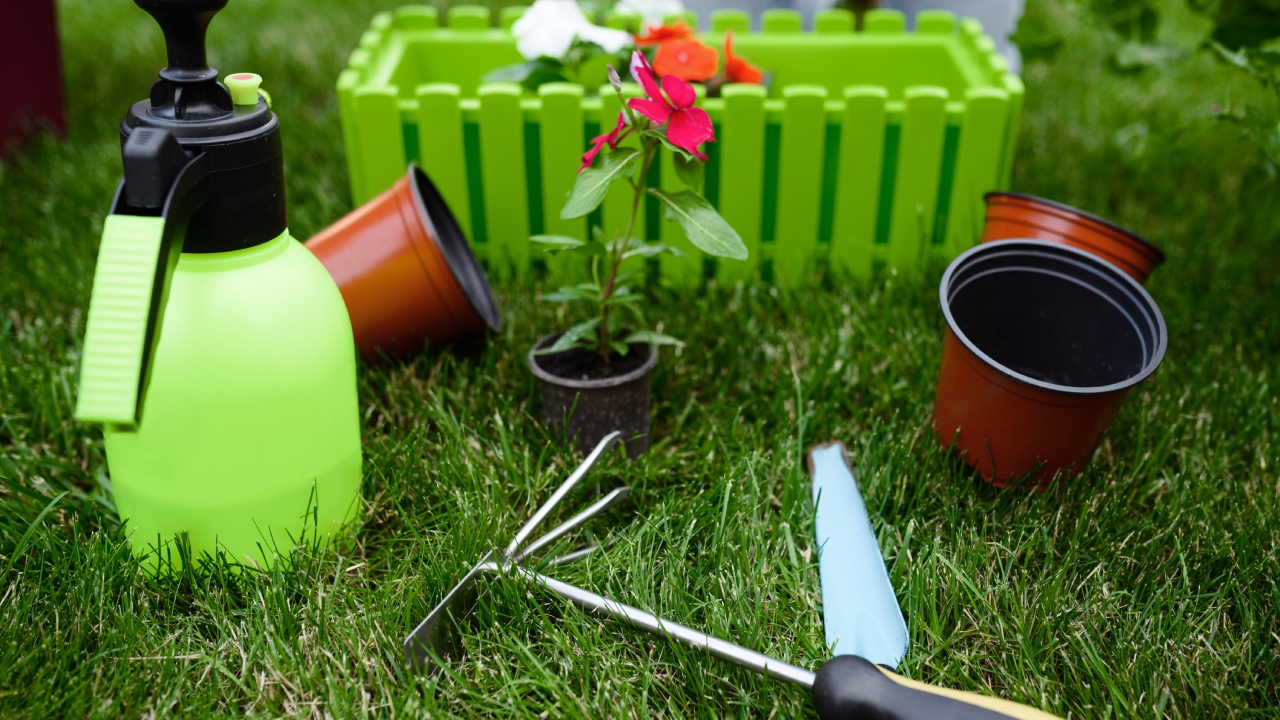Why Choose Us?
What Makes Us Different
At Comprehensive Irrigation and Lawn Care, we don’t just take care of your lawn; we make it flourish. Our team is passionate about palm trees and knows exactly what they need to thrive. Here’s why we’re the best choice for your lawn and commercial spaces:
- We Know Our Stuff: Our experts understand the ins and outs of different palm tree species. This means we can give each tree the specific care it needs to grow strong and healthy.
- Top-Notch Tools: We use the latest gadgets and techniques to keep your palms in tip-top shape. We keep an eye out for overwatering and underwatering, common issues that can mess up your trees (The Nature of Home).
- Personalized Care: No two lawns are the same. We customize our services to fit your property, whether it’s a cozy backyard or a sprawling commercial space.
- Eco-Friendly: We care about the planet. Our eco-friendly products and practices not only help your palm trees but also keep the environment happy and healthy.
Our Promise to You
We’re committed to giving you the best service possible. Here’s what you can expect when you choose Comprehensive Irrigation and Lawn Care:
| What We Offer | What It Means for You |
|---|---|
| Professionalism | We handle every job with the utmost professionalism, ensuring you’re happy with our work. |
| Dependability | We show up on time and get the job done right, because regular maintenance is crucial for your palm trees (LMC Houston). |
| Detail-Oriented | We focus on the little things, like the right watering schedules and fertilization, to keep your trees in perfect shape (The Nature of Home). |
| Great Customer Service | Got questions? Our friendly customer service team is always ready to help. |
| Quality Work | We stand by our work, making sure your palm trees get the best care possible. |
When you choose Comprehensive Irrigation and Lawn Care, you’re not just getting a service; you’re investing in the health and beauty of your landscape. Our expertise and dedication make us the perfect partner for all your palm tree care needs.
Palm Tree Care Basics
Why Proper Care Matters
Taking good care of your palm trees isn’t just about keeping them looking pretty. These trees add a touch of paradise to your yard or business, creating a peaceful vibe. When you give them the right care, you help them dodge common problems and grow strong. At Comprehensive Irrigation and Lawn Care, we’re here to guide you and offer top-notch services to make sure your palm trees thrive.
Spotting Overwatering and Underwatering
Knowing the difference between overwatering and underwatering can save your palm trees from a lot of trouble. Both can mess up your trees, but catching the signs early can stop things from getting worse.
Overwatering
Too much water can cause all sorts of headaches, like root rot, yellow leaves, mold, and pests. Keep an eye on the soil and tweak your watering schedule if needed. Here’s what to look out for:
- Yellow Leaves: Leaves turning yellow.
- Brown Tips: Edges of the leaves go brown.
- Droopy Leaves: Leaves look wilted or droopy.
- Pests: Bugs like mealybugs, fungus gnats, and whiteflies show up.
- Root Rot: Roots get mushy and black.
- Moldy Soil: Soil surface looks moldy.
- Black Spots: Stems and leaves get black spots.
To rescue an overwatered palm tree, cut back on watering, check and trim damaged roots, repot with well-draining soil, and water less often.
Underwatering
Not enough water can also hurt your palm tree, making leaves dry and crispy and stunting growth. Watch for these signs:
- Dry Fronds: Fronds dry out, especially where the leaf blades meet the petiole.
- Crispy Centers: The center of the leaves gets crispy while the rest stays green.
Most palm trees need watering once or twice a week, but this can change depending on the species, age, size, climate, and soil type (The Nature of Home).
| Symptoms | Overwatering | Underwatering |
|---|---|---|
| Leaf Color | Yellow leaves | Green leaves with crispy centers |
| Leaf Tips | Brown tips | Dry fronds |
| Leaf Position | Droopy leaves | Normal position |
| Pests | Mealybugs, fungus gnats, whiteflies | Rare |
| Roots | Root rot (mushy, black) | Healthy roots |
| Soil | Moldy, wet | Dry |
By recognizing these signs and tweaking your care routine, you can keep your palm trees looking lush and healthy. Our team is always ready to offer expert advice and services to help you get the best out of your lawn or commercial space.
Pruning and Trimming Tips
Keeping Your Palm Trees Happy
Taking care of palm trees isn’t just about looks; it’s about keeping them healthy and safe too. At Comprehensive Irrigation and Lawn Care, we’ve got some solid tips to help you out:
- When to Prune: Late spring or warmer months are the best times to prune. This helps the tree bounce back and fight off diseases (McCullough Tree Service).
- How to Cut: Make your cut at least two inches away from the trunk. This keeps the tree from getting sick (McCullough Tree Service).
- Dead Fronds: Trim off those dead or dying fronds regularly. This keeps the tree strong and stops fronds from falling during storms.
- Safety First: Get rid of fronds that are too close to buildings or blocking paths. This is super important during windy days.
Why Timely Trimming Matters
Trimming your palm trees on time is a big deal. It makes your yard look great and keeps everyone safe:
| Benefit | Why It Matters |
|---|---|
| Stability | Regular trimming keeps the tree balanced and stops fronds from falling. |
| Disease Control | Pruning at the right time helps the tree heal and resist diseases. |
| Safety | Removing risky fronds prevents damage to buildings and keeps paths clear (McCullough Tree Service). |
| Looks | Well-trimmed palms add a touch of tropical elegance to your yard (LMC Houston). |
At Comprehensive Irrigation and Lawn Care, we’re all about making sure your palm trees are healthy, safe, and looking their best.
Common Palm Tree Health Issues
Keeping your palm trees happy and healthy isn’t rocket science, but it does require some know-how. Let’s break down the common diseases, pests, and nutritional hiccups that can mess with your palm trees.
Diseases and Pests to Watch For
Palm trees can fall victim to various diseases and pests, which can really mess up their vibe if you don’t catch them early.
Ganoderma Root & Butt Rot
This nasty disease is caused by the fungus Ganoderma zonatum. It doesn’t play favorites and can infect many types of palms. Look out for older fronds that start to droop and wither, new growth that seems stunted, and a hollow sound when you tap the trunk. If left unchecked, this disease can kill your palm in three to four years, depending on the weather.
Overwatering Issues
Too much love (or water) can be a bad thing. Overwatering can lead to root rot, yellowing leaves, mold, and pest problems. Catching these issues early is key to saving your plant.
| Signs of Overwatering | Description |
|---|---|
| Yellowing Leaves | Your palm might be drowning. |
| Brown Leaf Tips | A sign of water stress. |
| Droopy Leaves | Could mean root rot or other water-related issues. |
| Pests | Mealybugs, fungus gnats, and whiteflies love wet conditions. |
Nutritional Deficiencies in Palms
Palm trees can also suffer from a lack of nutrients, which can show up in various ways and affect their overall health.
Potassium Deficiency
Potassium deficiency is a big deal, especially in coastal areas. Symptoms include yellow to orange spots on the leaves, necrotic (dead) spots, and withered leaf tips. If ignored, this deficiency can be fatal, especially in sandy soils where potassium leaches out quickly.
| Nutrient | Symptoms | Impact |
|---|---|---|
| Potassium | Yellow to orange spots, necrotic spots, withered leaf tips | Can be fatal, especially in sandy soils. |
By knowing these common health issues, you can keep your palm trees looking lush and lively. Always be on the lookout for signs of diseases, pests, and nutritional deficiencies so you can nip problems in the bud.
Professional Maintenance Services
Why Expert Care Matters
At Comprehensive Irrigation and Lawn Care, we get it—your palm trees are the pride of your yard. Keeping them healthy and looking good takes more than just a quick trim now and then. Our team knows the ins and outs of palm tree care, from regular trimming to keeping diseases at bay and making sure they stand tall and strong.
We’ve got the skills and know-how to give each type of palm tree the special attention it needs. Different palms have different needs, and we make sure they get exactly what they need to stay lush and vibrant all year long.
Why You Need Arborists
Bringing in the pros for your palm tree maintenance comes with a bunch of perks:
- Know-How and Experience: Our arborists are palm tree wizards. They know exactly what your trees need to thrive.
- Safety First: Trimming palms can be risky business. Our team has the right gear and training to do it safely.
- Save Time: Palm tree care can eat up your time. Let us handle it so you can get back to what you love.
- Top-Notch Care: We give your palms the specific care they need, making sure they get the right treatment (LMC Houston).
| Benefit | What It Means for You |
|---|---|
| Know-How and Experience | Our team knows the best tricks for keeping your palms in top shape. |
| Safety First | We’ve got the right tools and training to keep everyone safe. |
| Save Time | Focus on your life while we handle the palm care. |
| Top-Notch Care | Customized treatment for each type of palm tree. |
When you choose Comprehensive Irrigation and Lawn Care, you’re choosing peace of mind. We’re dedicated to making sure your palm trees look their best and live long, healthy lives. Let us help you keep your yard looking fantastic.
Fertilization for Palm Trees
Keeping your palm trees happy and healthy is all about giving them the right nutrients. At Comprehensive Irrigation and Lawn Care, we know how to make your palms stand tall and proud.
What Your Palms Need
Palm trees aren’t like your average plants—they’ve got their own special diet. They need a balanced mix of nutrients to grow strong roots, lush leaves, and stay disease-free. Fertilizers with equal parts nitrogen (N), phosphorus (P), and potassium (K) like 15-15-15 or 19-19-19 are great for this (Quora).
- Nitrogen (N): Makes those leaves green and lush.
- Phosphorus (P): Builds strong roots.
- Potassium (K): Keeps the plant healthy and tough against diseases.
For palms, a fertilizer like Down To Earth’s Palm Tree 6-2-8 is a top pick. It’s got the right mix of nutrients that palms love, perfect for tropical or subtropical spots.
When to Feed Your Palms
Timing is everything. Most palms do best with a feeding schedule of 2-3 times a year. Here’s a simple plan:
- First Feed: Right after the last frost.
- Next Feeds: Every 6-8 weeks during the growing season.
- Last Feed: Stop feeding about 6 weeks before the first frost.
Fertilization Schedule Table
| Fertilization Stage | Timing | Frequency |
|---|---|---|
| First Feed | After last frost | 1 time |
| Next Feeds | Every 6-8 weeks during growing season | 2-3 times per year |
| Last Feed | 6 weeks before first frost | 1 time |
For new palms, mix 1-2 tablespoons of fertilizer per gallon of soil. For established palms, sprinkle 1-2 tablespoons on the soil surface once a month during the growing season (Amazon).
Stick to this plan, and your palm trees will thrive. At Comprehensive Irrigation and Lawn Care, we’re here to help your landscape look its best.
Soil Tips for Happy Palm Trees
Getting the soil right is key to keeping your palm trees healthy and growing strong. At Comprehensive Irrigation and Lawn Care, we’re all about giving you the best tips to make sure your palms flourish, no matter where you plant them.
Best Soil Types
Different palm trees like different soils. Here’s a quick rundown:
- Sandy Soil: Palms like Parajubaea torallyi, Bismarckia, and Butia eriospatha love sandy soil. They grow like champs in it (PalmTalk).
- Clay Soil: Most Sabal palms don’t do well in clay, but Sabal causiarum is an exception. Butia odorata also thrives in clay, even without extra water or fertilizer (PalmTalk).
- Alkaline Soil: In places like West Texas, the soil is alkaline and tough. This is something to keep in mind when planting palms there.
| Palm Species | Preferred Soil Type | Extra Tips |
|---|---|---|
| Parajubaea torallyi | Sandy | Needs well-drained sandy soil |
| Bismarckia | Sandy | Grows well in sandy conditions |
| Butia eriospatha | Sandy | Loves sandy soil |
| Sabal causiarum | Structured Clay | Needs well-structured clay soil |
| Butia odorata | Clay | Thrives in clay without extra water or fertilizer |
How Soil Affects Palm Health
The right soil can make a big difference in how well your palm trees do. Here’s why:
- Drainage and Airflow: Sandy soil drains well, which keeps roots from getting waterlogged and rotting. It also lets air get to the roots, helping them grow.
- Nutrient Holding: Clay soil holds onto nutrients better, which is great for palms like Butia odorata.
- Climate Fit: The best soil for your palms can depend on the climate. Soil that works in a wet summer might not be great for a cooler climate.
At Comprehensive Irrigation and Lawn Care, we get the ins and outs of palm tree care. Whether you’re dealing with sandy, clay, or alkaline soil, we’ve got the know-how to make sure your palms get the best care possible.
Caring for Your Palm Trees
Different Palms, Different Needs
Palm trees aren’t one-size-fits-all. Each type has its own quirks and preferences. Let’s break it down:
- Drought-Tolerant Palms: These tough cookies can handle dry spells like champs. Perfect for places where rain is a rare treat, they thrive with just a sprinkle of water now and then. Think of them as the camels of the palm world. (Quora)
- Oil Palms: These guys love it hot and humid. They bask in temperatures between 22°C and 33°C and need a good 5-6 hours of sunshine daily. If your place feels like a sauna, oil palms will feel right at home. (Quora)
- Cold-Hardy Palms: Some palms laugh in the face of frost. They can handle the chill and even a bit of snow. Perfect for places like Quirindi, NSW, and Curra, QLD, Australia. These palms are the winter warriors of the palm family. (Quora)
Growing Palms in Different Climates
Palm trees can be divas, but with the right care, they’ll thrive anywhere. Here’s how to keep them happy:
- Tropical and Subtropical Climates: These palms love warmth and humidity. Give them plenty of sunlight, regular watering, and well-drained soil. It’s like creating a mini tropical paradise in your backyard. (Quora)
- Arid and Dry Climates: For desert-like areas, go for drought-tolerant palms. Water them sparingly and ensure the soil drains well to avoid root rot. Mulch around the base to keep the moisture in and protect the roots from the scorching sun.
- Cold Climates: Choose cold-hardy palms that can brave the cold. Plant them in spots shielded from harsh winds and frost. During winter, use frost blankets or other protective measures to keep them cozy.
By giving each palm type the care it craves and adjusting to your local climate, you can enjoy these stunning trees no matter where you live.












